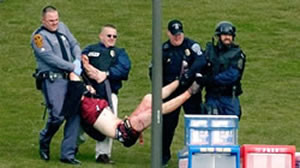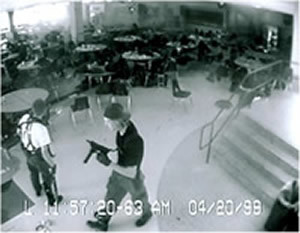MCOLES as an in-service training provider for Michigan law enforcement officers.
Law Enforcement Officer

With more than five years past performance, Trauma Training FX specializes in training Law Enforcement Officers (LEOs) and other first responders how to mitigate the preventable causes of death in real world situations. With the ever increasing dangers on America’s streets, LEOs face life and death situations every day. Our training will provide each student with the tools necessary to save a life. That life, may just be their own.
History of LEFR-TCC
The Law Enforcement and First Response Tactical Casualty Care (LEFR-TCC) course was derived from the military’s Tactical Combat Casualty Care (TCCC) course. The TCCC course was developed by the U.S. military and introduced evidence based, life-saving techniques and strategies on the battlefield in tactical situations. It has also been documented to produce dramatic improvements in casualty survival in Iraq and Afghanistan. TCCC is the only set of battlefield trauma care guidelines endorsed by the American College of Surgeons.

While the TCCC course was originally developed for combat troops being deployed, these life-saving techniques are now available for civilian tactical settings through the Law Enforcement and First Response Tactical Casualty Care (LEFR-TCC) course. (The LEFT-TCC course was developed by the Pre-hospital Trauma Life Support (PHTLS) Committee of the National Association of Emergency Medical Technicians, in cooperation with Denver Health and Hospital Authority Paramedics and the Denver Police Department Metro SWAT).
This one day program teaches first responders including police officers, firefighters, emergency medical technicians and other public safety responders, the basic medical care interventions that will help save an injured responder’s life until EMS personnel can safely enter the tactical scene. The medical care approach is divided into phases of care, depending on the tactical situation. The course combines classroom didactics with practical hands-on training. Each participant will learn how to recognize and treat life-threatening bleeding, using a tourniquet and/or a hemostatic agent for locations where a tourniquet cannot be used. Participants will learn how to protect the airway, apply a vented chest seal for chest wounds, how to recognize a tension pneumothorax and apply a pressure dressing for minor bleeds.

The LEFR-TCCC is overseen by the PHTLS Committee who is responsible for the design, conduct and dissemination of the course. Through the Chair, the PHTLS Committee appoints and oversees the performance of international, national and affiliate faculty, as well as, regional and state coordinators. The Committee Chair reports to the President of NAEMT. The Committee on Trauma of the American College of Surgeons is permanently represented on the Committee by the PHTLS Medical Directors.
This Instructor’s Manual has been prepared to inform potential course sponsors, instructors and PHTLS / NAEMT Tactical Casualty Care for Law Enforcement Officers, coordinators of the program’s purpose, organizational structure, course requirements and lecture outlines. Each PHTLS course must be approved and conducted as prescribed in the Instructor’s Manual with the involvement of the appropriate NAEMT / PHTLS personnel and the state / provincial Committee on Trauma Chair (or designee).
Trauma Traning FX offers one day LEFR-TCC training, two day didactic training and real world culmination exercises. These exercises take the participants into simulated real world senarios, with role players as aggressors and casualties with life-like wounds created by Hollywood Special Effects makeup artists. Pryotechnics are used to create the realism for different scenarios. Air Soft guns are used to further create the realism.
